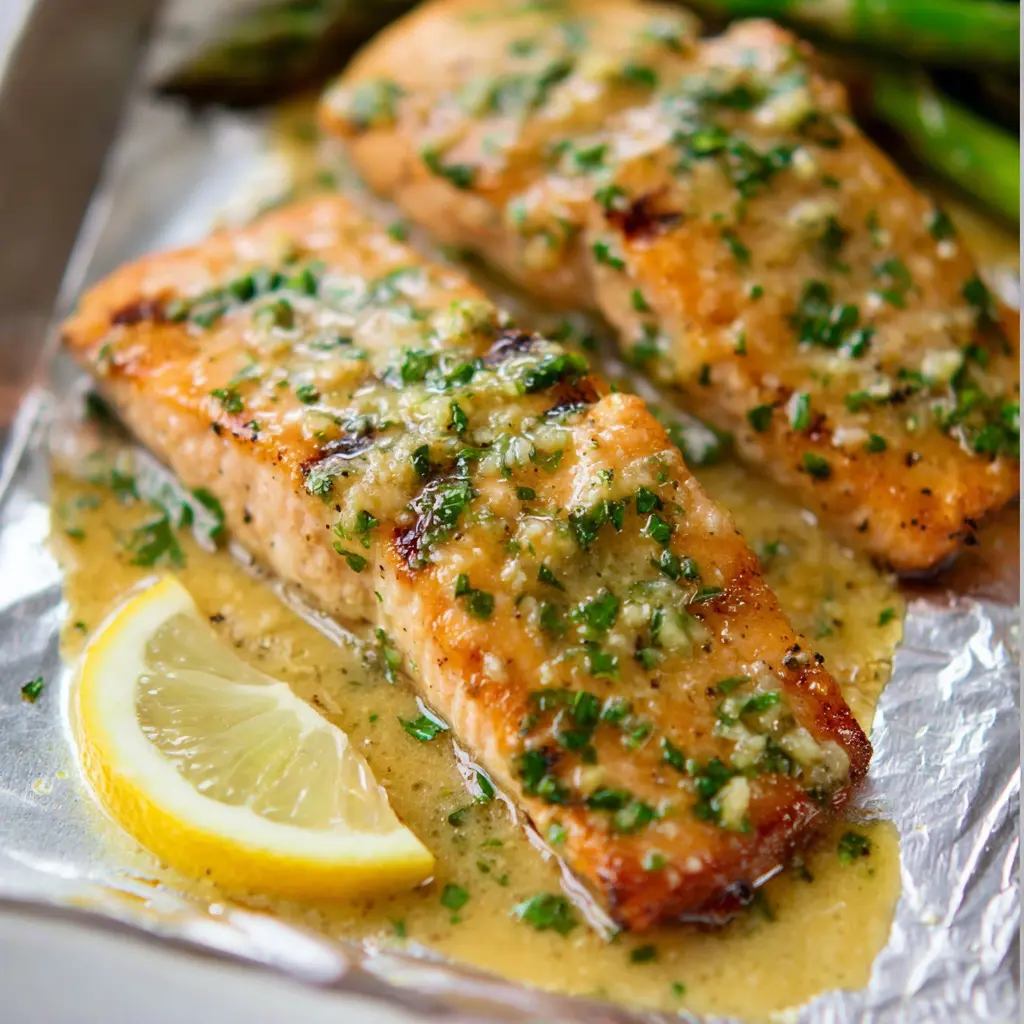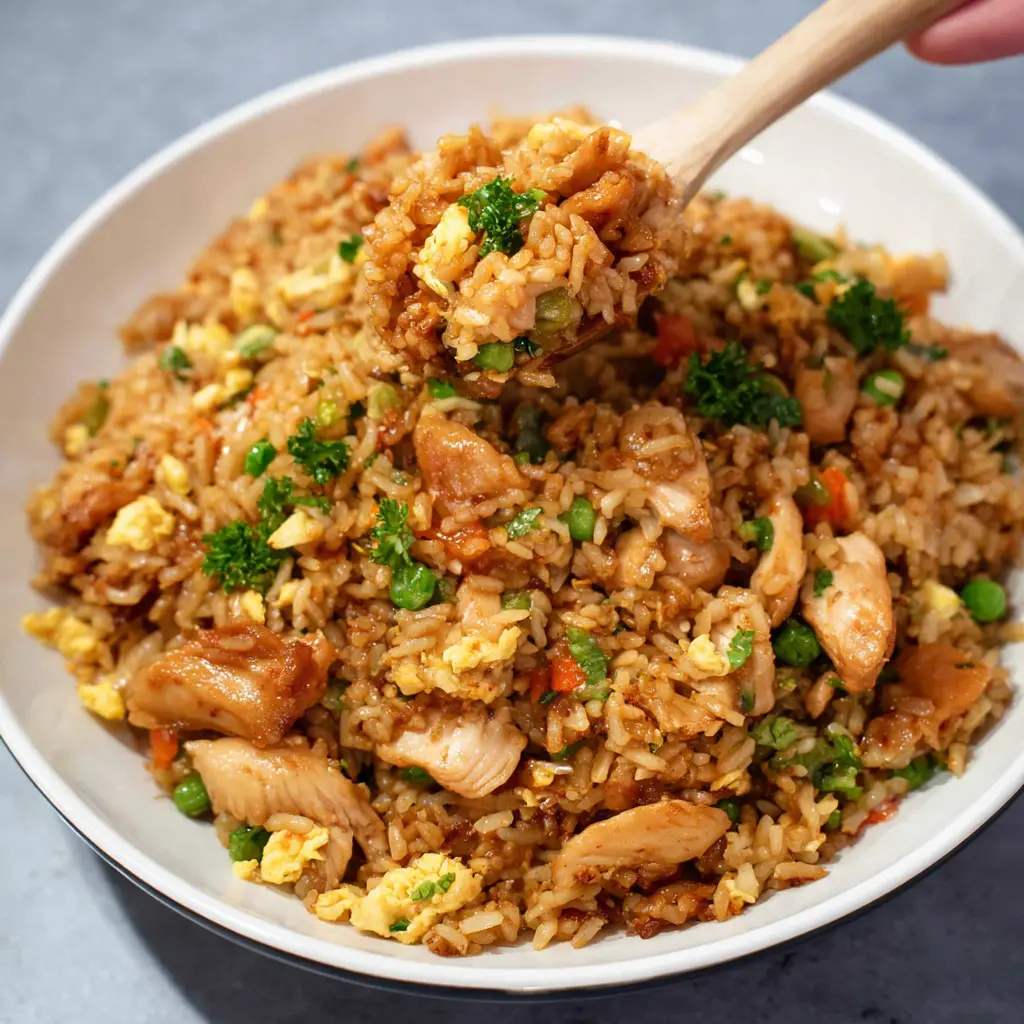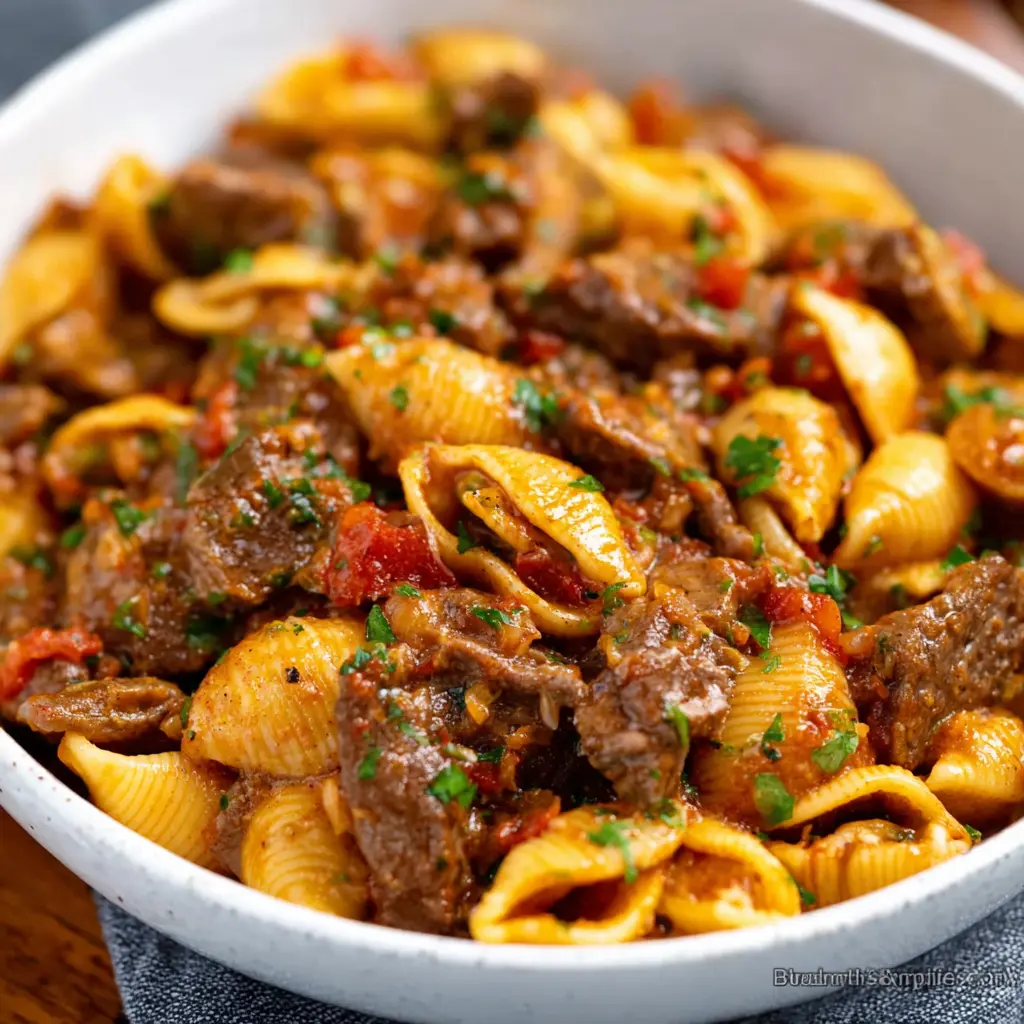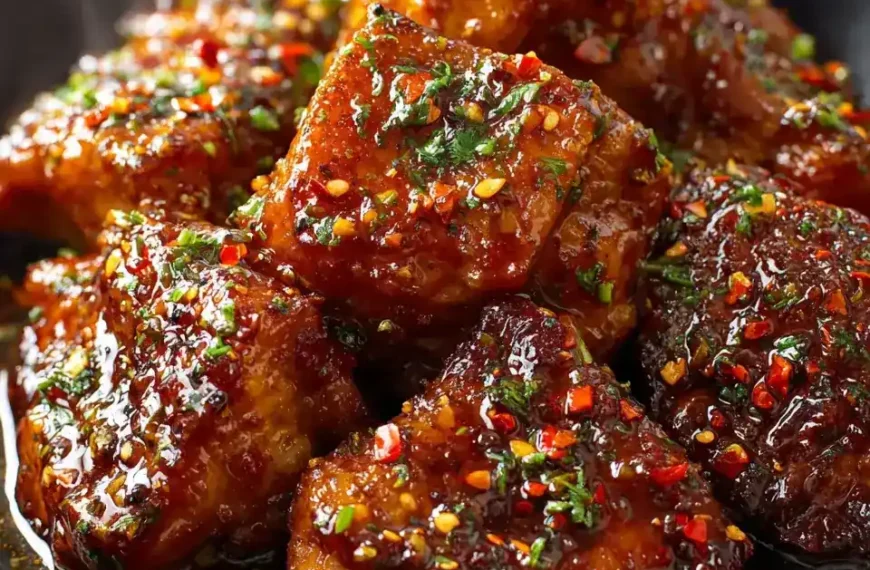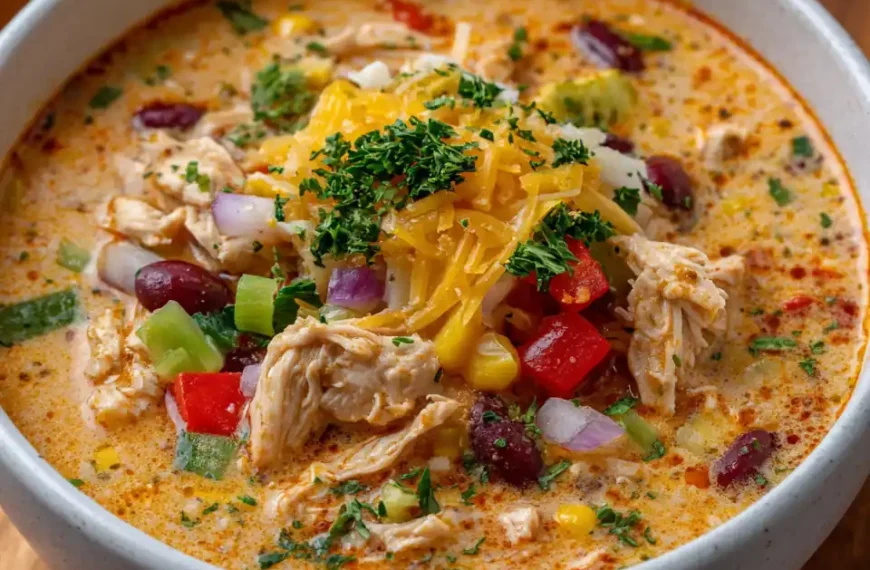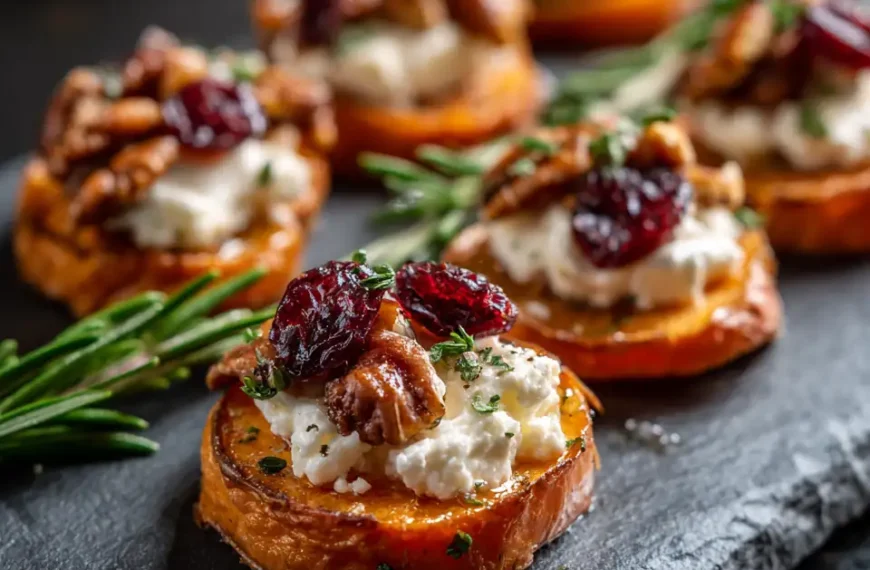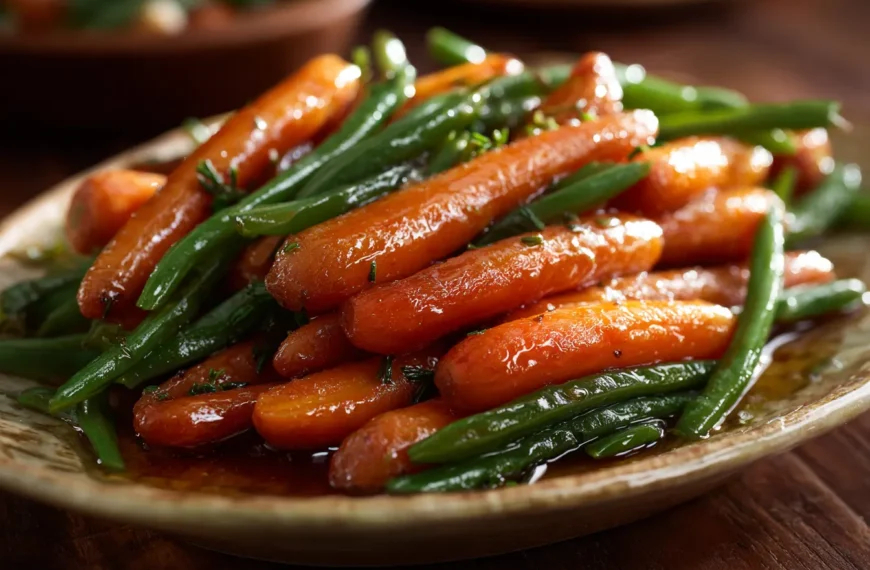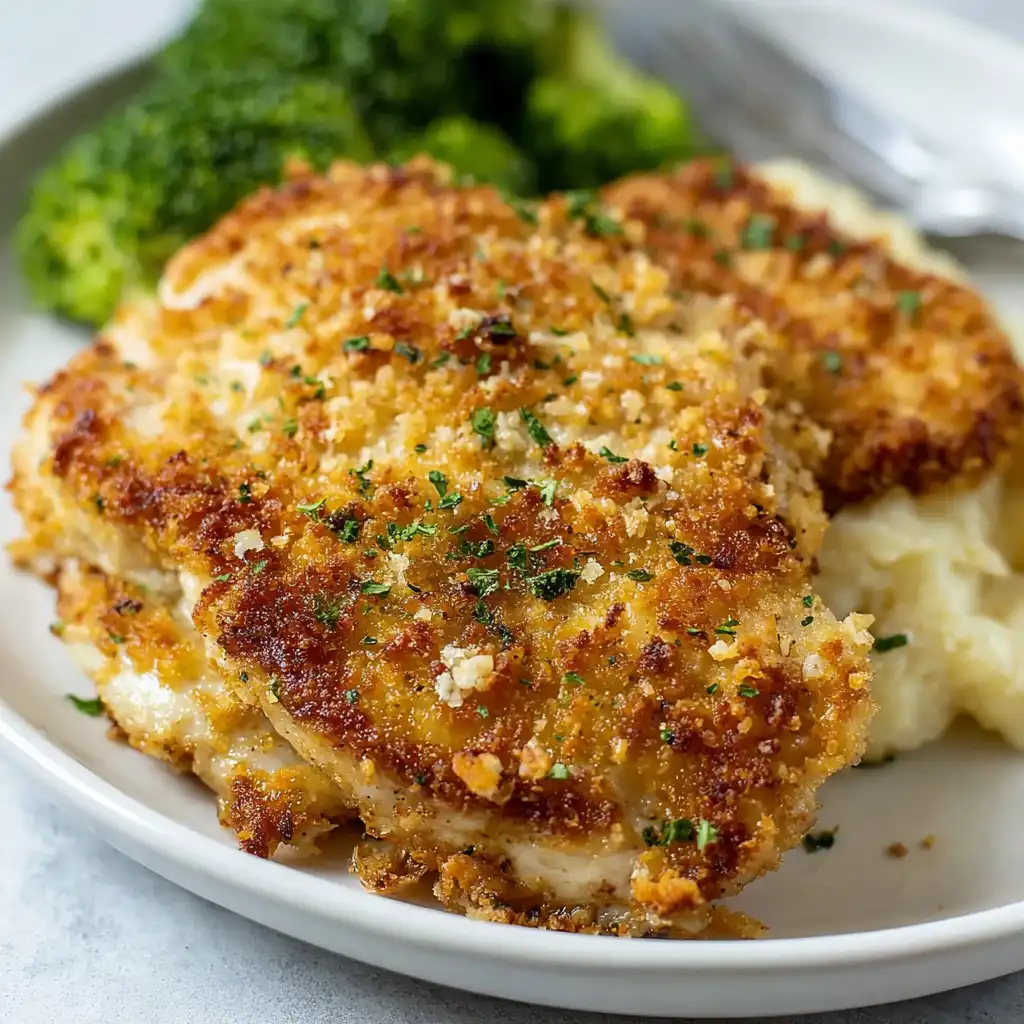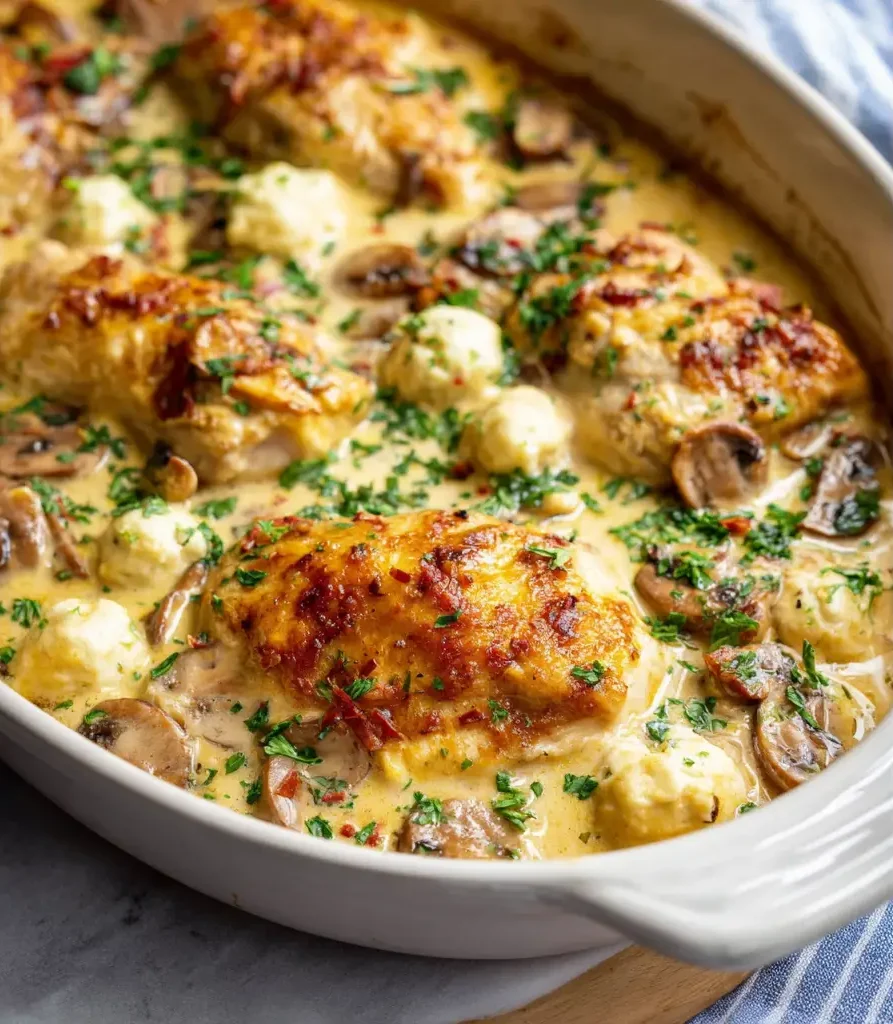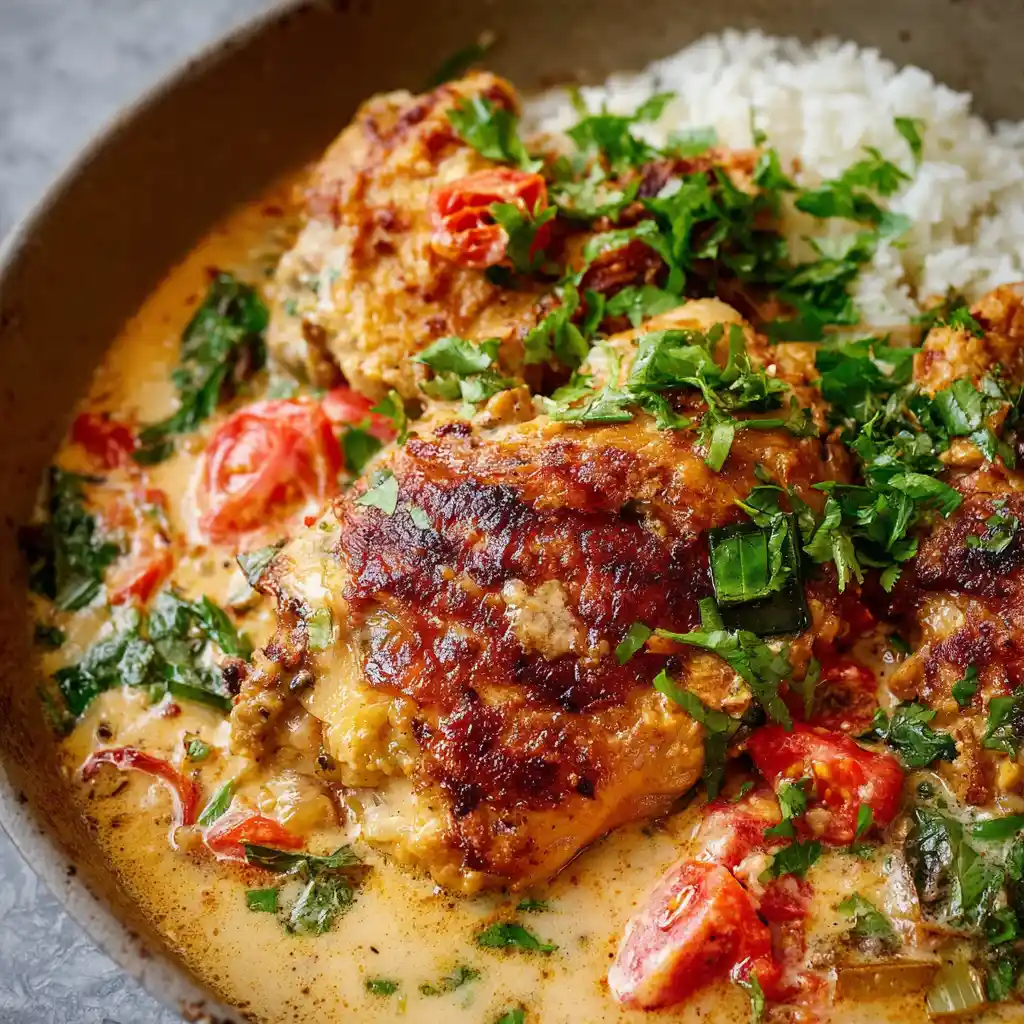Introduction
There’s something deeply satisfying about searing a fillet of salmon until the crust turns golden, then finishing it with a swirl of butter and garlic that melts into a silky sauce. Garlic butter salmon is one of those recipes that feels restaurant-quality, but it’s surprisingly quick and easy to make at home. The smell alone is enough to draw people into the kitchen.
In this article, we’ll break down the steps to getting perfectly crispy salmon with a rich, garlicky butter sauce. You’ll learn why this method works, how to avoid common mistakes, and how to serve it with minimal fuss and maximum flavor.
Why Garlic Butter Salmon Always Delivers
A Weeknight Dish That Feels Special
The first time I made garlic butter salmon, it wasn’t for a dinner party or any big occasion. I was hungry, tired, and staring at a couple of salmon fillets in the fridge. What followed was surprisingly simple. I dredged the fillets in seasoned flour, seared them until crisp, and finished them in a pan sauce made with butter, garlic, and a splash of stock. That’s all it took to turn a quiet night into a seriously satisfying meal.
Since then, this recipe has become a regular in my rotation. The garlic butter sauce is rich but balanced. The lemon wedge on the side cuts through that richness just enough. And the salmon always flakes apart perfectly. It’s one of those meals that’s quick enough for a Tuesday but feels like a treat.
There’s also comfort in knowing it works with simple tools. A sharp knife, a reliable pan, and a wooden spoon are all you really need. This dish doesn’t rely on obscure ingredients or complicated steps. It’s straightforward, forgiving, and wildly flavorful.
Garlic, Butter, and a Crisp Golden Crust
The combination of garlic and butter has stood the test of time for a reason. It pairs beautifully with salmon, especially when the fish is lightly dredged in seasoned flour first. This creates a golden crust that not only adds texture but also helps thicken the sauce naturally as the salmon finishes cooking in the pan.
By frying garlic just until it turns fragrant, then building the sauce with stock and butter, you get a velvety, spoon-coating texture that clings to each bite. It’s buttery without being greasy, savory without being too salty, and exactly the kind of flavor that turns a simple fillet into a memorable meal.
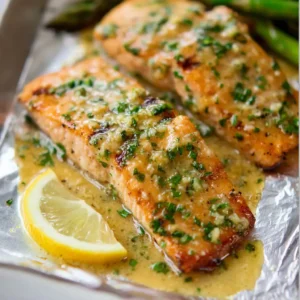
Garlic Butter Salmon
Equipment
- Sharp Knife & Chopping Board
- Large Shallow Dish & Fork (for dredging salmon)
- Large Non-Stick Pan & Tongs
- wooden spoon
- Jug (for stock)
Ingredients
- 4 x boneless skinless Salmon Fillets take out the fridge 15-30 mins before needed (approx 4-5oz / 120-150g each)
- 40 g / 1/4 cup Plain Flour
- 1 tsp EACH: Garlic Powder Salt, plus more to taste
- 1/2 tsp Black Pepper plus more to taste
- 1/2 tbsp Olive Oil
- 6 tbsp / 90g / 3.2oz Unsalted Butter divided into tbsp chunks (see notes)
- 2 cloves of Garlic finely diced (see notes)
- 120 ml / 1/2 cup Vegetable Stock
- 1 tbsp finely diced Fresh Parsley
- 1 Lemon divided into 4 wedges (to serve)
Instructions
- In a large shallow dish combine flour, garlic powder, salt and black pepper. Coat each salmon fillet, giving them a shake before placing to one side.
- Add the olive oil to a large non-stick pan over medium-high heat. Once hot, add the fillets and fry for around 3 mins, or until they build up a golden crust on the bottom. Carefully flip them over and fry for another 2 mins, or until golden on the other side. Add in 1 tbsp butter and baste the fillets for a minute or so, or until they’re just about cooked through. Remove from pan and lower heat to medium.
- Add the garlic and fry until it just begins to take on colour (careful it doesn’t burn or it’ll turn bitter!). Pour in the stock and scrape any flavour off the pan. Add the remaining butter and whisk until it binds with the stock and turns it cloudy. Add parsley and a pinch of salt & pepper if desired.
- Simmer for a few mins, stirring as you go, until the sauce begins to thicken. Turn heat to low and add the salmon back in. Baste in the sauce to warm it through, then serve with more sauce and a squeeze of lemon juice. The sauce will thicken more as you baste the salmon.
Notes
b) Butter – I like using unsalted butter because you get so much more control over how salty the sauce ends up. If you’ve only got salted just go easy when you season to taste and preferably use low-sodium stock if you’ve got it. Important to measure correctly (i.e not heaping tbsps) otherwise you’ll end up with way too much butter.
c) Salmon – You can use slightly larger fillets if you’d prefer, you’ll just need to adjust the timings slightly. You want the salmon to be only just cooked through as you fry it. It should easily flake and the centre should turn from a deep pink to a light pink similar in colour to the outside. Bear in mind they’ll carry on cooking slightly as they rest and when added back to the pan.
d) Consistency – The will be quite thin at first, but when you add the salmon in, the floured exterior helps thicken the sauce. If it thickens quite a bit, you might notice it starting to split. In which case I’d add 1 tbsp stock and give it a good whisk to bring it back together.
e) Lemon – This is important to balance the richness of the sauce. Don’t squeeze it straight into the pan or it’ll break up the sauce, just serve a wedge with each piece and let people squeeze their own to taste.
f) Serving – Here I’ve served with some Parmesan Smashed Potatoes and asparagus that I threw in towards the end of cooking. You could serve with regular Roasted Baby Potatoes, or even Mashed Potatoes or Rice! Anything to mop up that yummy sauce.
g) Calories – Just the salmon and sauce divided by 4. Assuming 120g salmon fillets and half of the seasoned flour. Nutrition
Calories: 343kcal | Carbohydrates: 4.79g | Protein: 25.51g | Fat: 24.33g | Saturated Fat: 12.162g | Polyunsaturated Fat: 1.828g | Monounsaturated Fat: 7.344g | Trans Fat: 0.74g | Cholesterol: 101mg | Sodium: 384mg | Potassium: 468mg | Fiber: 0.3g | Sugar: 0.06g | Vitamin A: 754IU | Vitamin C: 1.7mg | Calcium: 20mg | Iron: 0.83mg
Building the Perfect Garlic Butter Sauce for Salmon
Why Simple Ingredients Work So Well
The beauty of garlic butter salmon lies in how a few familiar ingredients come together to create something bold and comforting. Each element of the sauce has a clear job to do. When combined in the right order, they build flavor fast without any fuss.
Butter is the base. It creates the body of the sauce, giving it that signature richness. Using unsalted butter helps you control the saltiness, especially when vegetable stock and seasoned flour are already in play.
Fresh garlic adds that signature kick, but it’s important not to rush it. Garlic cooks fast and burns even faster. Letting it gently sizzle until lightly golden brings out its best flavor—sweet, nutty, and mellow.
Vegetable stock adds moisture and just enough savory backbone to keep the butter from overwhelming the dish. It also lifts the garlic bits off the bottom of the pan, creating a deeper, layered taste.
Finally, a squeeze of lemon juice at the table balances the whole dish. Its acidity cuts through the fat and highlights the flavor of the salmon without overpowering the sauce. It’s best served as a wedge, so each person can adjust it to their taste.
How to Build and Balance the Sauce
After the salmon is seared and set aside, you’ll be left with a pan full of flavor. This is where the sauce begins. Fry the garlic in the remaining oil and butter until it just starts to color. Then deglaze the pan with the vegetable stock, scraping up the golden bits stuck to the surface.
As the stock simmers, whisk in the remaining butter one tablespoon at a time. This creates a sauce that’s smooth and slightly glossy. When the salmon goes back into the pan, its floured crust thickens the sauce just a bit more.
A sprinkle of fresh parsley adds a bright herbal note and a touch of color. Let the salmon finish warming through in the sauce, spooning it over the fillets as it thickens slightly. Serve it with a wedge of lemon and any sides you like rice, potatoes, or vegetables all work beautifully.
The result is a buttery, garlicky sauce that wraps around the salmon in the most satisfying way, making every bite rich, tender, and full of flavor.
Cooking Garlic Butter Salmon Just Right
How to Sear Salmon for a Golden Crust
The first key to great garlic butter salmon is getting the crust right. It’s not just about looks—this golden surface adds a delicate crispness and helps the sauce cling to each fillet.
Start by bringing the salmon to room temperature. This step ensures even cooking and helps prevent the fillets from sticking to the pan. Pat them dry with a paper towel, then dredge lightly in seasoned flour. The flour creates that golden crust and helps thicken the sauce later.
Heat olive oil in a large non-stick pan over medium-high heat. You want it hot enough that the salmon sizzles when it hits the surface, but not so hot that the oil smokes.
Place the salmon in the pan skin-side up (if using skinless, presentation-side down). Don’t move the fillets around. Let them sear undisturbed for about 3 minutes, until you see a deep golden edge forming. Then carefully flip and cook the other side for another 2 minutes.
Right before removing the salmon, add 1 tablespoon of butter to the pan and begin basting. Spoon the melted butter over the tops of the fillets as they finish cooking. This adds richness and keeps them moist.
How to Know When Salmon Is Done
Perfectly cooked salmon is tender, flaky, and still moist in the center. The flesh should be opaque but just barely. If the center is still slightly translucent, that’s okay—it will continue to cook a little as it rests and finishes in the sauce.
Use a fork to gently press on the top. If it flakes apart easily and the center has changed from deep pink to pale pink, it’s ready. For extra precision, you can use a thermometer. Aim for an internal temperature of 125°F (52°C) before removing from heat.
Once the sauce is ready, return the salmon to the pan. Let it sit in the sauce over low heat for a minute or two. Spoon the sauce over the fillets to warm them through and coat them fully.
This approach gives you crisp edges, tender flesh, and a buttery finish in every bite.
Variations, Serving Ideas, and Storage Tips
Easy Ways to Customize Garlic Butter Salmon
Once you’ve nailed the basics, this garlic butter salmon recipe is easy to adapt. The method stays the same, but small changes can bring new flavors to your table.
Prefer a smoky twist? Add a pinch of paprika or a dash of smoked salt to the flour mixture. Craving heat? Toss a few red pepper flakes into the butter as it melts. You can even stir in a spoonful of Dijon mustard or a splash of white wine to the sauce for depth.
If you want to switch up the protein, the same method works beautifully with trout, cod, or even chicken cutlets. Just adjust cooking times depending on thickness.
For herbs, parsley is classic, but don’t hesitate to try fresh dill, chives, or a few torn basil leaves to match what’s in your kitchen. Each one adds its own character without overpowering the garlic butter base.
What to Serve with Garlic Butter Salmon
This dish pairs well with a wide variety of sides. The goal is to have something that soaks up the sauce without competing with it.
Try:
- Mashed potatoes, for a soft, creamy texture
- Rice, to absorb the sauce in every spoonful
- Roasted baby potatoes, for a crispy contrast
- Steamed asparagus or green beans, to keep it light
- Crusty bread, when you want to mop up every last drop
Serving it with lemon wedges is more than just garnish. A squeeze of lemon right before eating brightens the flavor and balances the richness of the butter.
How to Store and Reheat Without Losing Texture
If you have leftovers, store the salmon and sauce in an airtight container in the refrigerator for up to 3 days. For best results, reheat in a non-stick pan over low heat with a splash of stock or water to loosen the sauce and prevent drying out. Cover the pan briefly to help warm the fillets through evenly.
Avoid microwaving, as it can turn the salmon rubbery. If you must, cover the dish loosely and reheat in short bursts with a damp paper towel on top to help retain moisture.
Garlic butter salmon also makes a great lunch the next day. Flake it into a grain bowl or serve it cold over a green salad with a drizzle of the leftover sauce as dressing.

Frequently Asked Questions
Does garlic butter go with salmon?
Absolutely. Garlic butter is one of the best pairings for salmon. The richness of the butter enhances the natural flavor of the fish, while garlic adds a warm, savory note. When combined with a hint of lemon and fresh herbs, the result is a balanced, flavorful sauce that complements the salmon without overpowering it.
Is garlic good to put on salmon?
Yes. Fresh garlic works beautifully with salmon. It brings out the savory side of the fish and adds depth to the overall flavor. Just be sure to sauté the garlic gently to avoid burning, as that can lead to bitterness. Finely diced garlic cooked in butter creates a smooth, aromatic base for sauces.
Is garlic butter salmon healthy?
Garlic butter salmon can be part of a balanced meal. Salmon is rich in omega-3 fatty acids and high-quality protein. While butter adds saturated fat, using a controlled amount—especially unsalted—keeps the dish flavorful without being overly heavy. Pairing it with vegetables or light sides helps keep the overall meal nutritious.
What does Gordon Ramsay put on salmon?
Gordon Ramsay often keeps salmon simple but flavorful. His recipes typically include salt, pepper, lemon, garlic, and herbs like dill or parsley. He focuses on achieving a crisp sear and uses butter-based sauces or pan juices to finish the dish. Garlic butter salmon follows a similar approach with restaurant-level results at home.
Conclusion
Garlic butter salmon is one of those rare meals that checks every box quick, comforting, flavorful, and easy to pull off with everyday ingredients. Whether you’re cooking for yourself or serving guests, this dish delivers rich, golden flavor in under 30 minutes without complicated steps.
From the crisp sear on the salmon to the silky sauce flavored with garlic and butter, every part of the recipe works together to create something memorable. Add a wedge of lemon and your favorite side, and you’ve got a meal that feels restaurant-worthy without ever leaving your kitchen.
